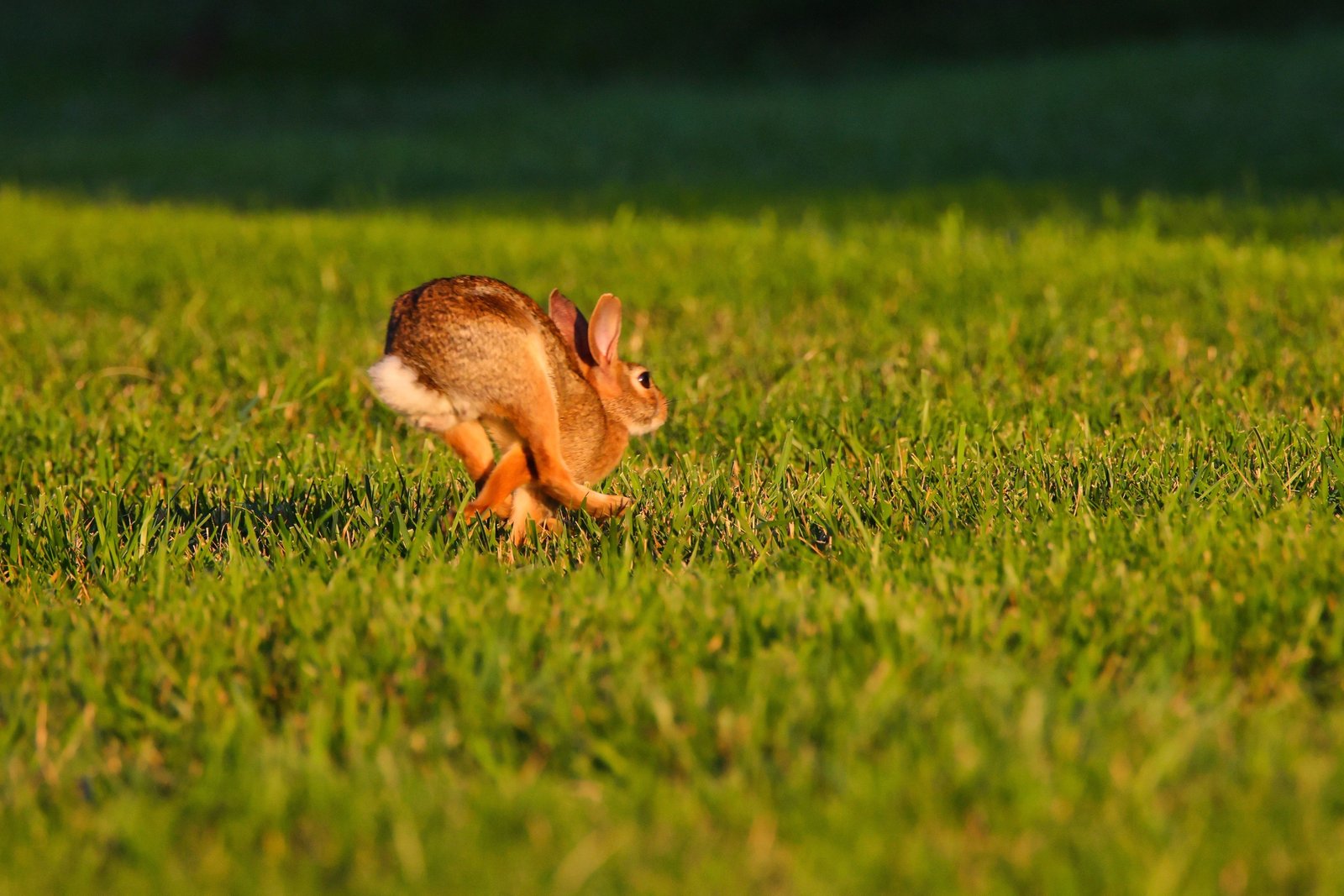A rabbit exercise is crucial to keep your bunny’s body healthy and strong. Rabbits that don’t have enough exercise may suffer from obesity and broken bones. You don’t have to provide strenuous activities to your bunny to maintain its weight. As a matter of fact, simple tasks can provide exercise to your pet. In this blog post, we will answer this question: do rabbits need exercise? You will also learn what exercises you can give to your bunny. Find out the best rabbit exercise equipment you prefer. Enjoy reading!

Do rabbits need exercise?
As active pets, rabbits need exercise to have healthy and robust bone structures. Daily exercise can help your bunny prevent overeating. It is a habit that may lead to serious health issues like heart disease and arthritis. Obesity also limits the bunny’s movements, making it difficult to self-groom. Thus, it becomes prone to severe conditions like flystrike.
In addition, bunnies that lack exercise suffer from poor skeletal frames. They can easily break their backs and bones due to sudden movements. Obese rabbits also tend to suffer from fatty liver disease. If the condition is neglected, your pet may die. On the other hand, pregnant does that are obese can also die due to the lack of proper dietary intake.
Besides the physical benefits of exercise, it also helps the bunny to fight boredom. Boredom can result in destructive behaviors in rabbits. An inactive bunny overgrooms itself, so it ingests much of its furs which may result in hairballs. Rabbits that lack mental stimulation may suffer from depression. They also tend to get skittish and aggressive toward their owners.
How much Exercise does Your Pet Needs?
If your pet wants a healthy life, it must have at least three to eight hours of exercise outside its hutch. When letting your bunny out of its enclosure, protect it against predators. You can also let your bunny roam inside your home if you don’t have time to watch it. However, ensure to make your home rabbit-proof.
Ideally, rabbits must exercise at dusk and dawn. As crepuscular animals, they are active during these times of the day. It would also be better to let them exercise twice daily to meet the rabbit exercise they need. To give you an idea, you can schedule your bunny’s activities from 6 to 9 in the morning and 4 to 8 in the evening. However, don’t wake up your pet if it is sleeping.
Other than the schedule of the exercise, it is also vital to consider the space your bunny requires. You must at least provide 32 square feet of space where your pet can play safely. Make your bunny free-ranging by giving it unlimited access inside your home. But if it is impossible, you can provide a rabbit playpen for your bunny.
In the following sections, you will learn what rabbit exercises are for your pet. Since bunnies love routines, you must stick to the schedule. There are also supplies that you have to provide to keep your pet engaged and stimulated. Above all, you should take advantage of the opportunity to strengthen your bond with your pet.
Rabbit Exercise #1: Free-Roaming
Unlike caged rabbits, a free-roaming bunny has more chances to exercise. It is because they have unlimited access to the house. It is an ideal setup if you have ample space with a few pieces of furniture and valuable items. Since rabbits can be naughty, they are likelier to chew carpets, cables, and furniture. Hence, making your home rabbit-proof is crucial.
But if you want your pet to roam freely inside your house, it is helpful to litter train your bunny. You don’t want to wake up with floors wet because of your bunny’s pee. Giving toys to your pet would keep it entertained. They can prevent your bunny from chewing your valuables. You must also set a home base for your pet and give it enough time to adjust.
Another option to encourage your bunny to exercise is to let your pet range freely outdoors. It can be a scary decision, but it is worth the try! You don’t want to let your bunny roam in a garden infested with predators. Thus, ensure your garden is safe from predators and toxic household plants. It must also have a high, secured fence to prevent your pet from escaping.
Your bunny would love the freedom outside, but we recommend you put it back inside the cage at night. Some predators hunt at night, making your pet an easy target. Besides, you wouldn’t want to wake up in the middle of the night to check your pet’s condition. Putting it in its enclosure will bring peace to you and your pet.

Rabbit Exercise #2: Playing with Toys
Rabbits are playful creatures, so they would appreciate it if you gave them toys. Rabbit toys don’t only mentally stimulate your bunny, but they also provide exercise to your pet. But as a warning, you should not give your bunny an exercise wheel. Rabbits don’t have flexible spines like guinea pigs. Thus, they may injure their backs while running at the wheel.
Instead of an exercise wheel, you can give your pet activity balls designed for rabbits. These furry pets love to pick up and nudge the balls. As much as possible, prevent giving synthetic balls to your pet. Yes, a rabbit chews. As creatures that love to chew, rabbits can ingest chemicals from these balls. You can make a customized ball using twigs and hay since they are safer for your pet.
Nevertheless, playing with toys shouldn’t replace your pet’s exercise outside its cage. Even though your bunny has plenty of toys, it requires at least three hours of exercise outside its hutch. You can also add a litter box, tunnels, shelters, and chew toys inside rabbit playpens. A rabbit’s litterbox is a designated area for your rabbit to relieve themselves.
Rabbit Exercise #3: Leash Walking
Do rabbits need exercise like walking? One of the best exercises you can provide your bunny is leash walking. Rabbits prefer to roam around freely without a leash. However, you don’t want your rabbit roam freely in an unsecured and new place. It may get lost or attacked by predators. Your bunny may also ingest toxic plants and grass sprayed with pesticides.
Before you put a harness on your pet, you must earn its trust. Giving your bunny some treats is an effective way of winning it over. Since bunnies feel unsafe with a new object, you must slowly introduce the leash to your pet. You can put it beside your pet, allowing it to sniff and explore the leash.
Choosing the suitable harness for your bunny is crucial to keep your pet comfortable. A traditional leash-and-collar combo is not advisable since it may break your bunny’s neck. The best harness suitable for a bunny is the one that can be wrapped in your rabbit’s body. It must also be secured both by buckles and Velcro.
As mentioned earlier, rabbits are threatened by a new environment. You must walk your pet on the same route every day. Furthermore, choose a place where there are no loud noises. Bunnies can get stressed when loud noises and sudden movements surround them. It is also essential that the pathway is not too hot to prevent your bunny’s feet from getting injured.

Rabbit Exercise #4: Hopping
You can encourage your rabbit to exercise by putting up platforms in its enclosure. Rabbits can walk but prefer to hop since it exercises their hind legs. If you have an old or sick rabbit, you must ask the vet if it is safe to provide it with a platform. Rabbits that don’t have enough exercise are prone to fractures because of poor bone strength.
To prevent rabbit injuries, installing platforms carefully is crucial. The platforms must be accessible to your bunny. They should not be too high, and the footholds should not be too steep. Your pet must also be able to stand on the platform without bumping its head on the enclosure’s roof. Lastly, the platform should be sturdy enough to withstand your pet’s weight.
Rabbit Exercise #5: Training
Training your pet is not only an opportunity to teach it more tricks. But the activity can also be a form of exercise. It would be helpful if you understand your pet’s behavior before starting to train it. Thus, you will know if it is excited, tired, or irritated. Remember, training is supposed to be fun for you and your rabbit.
Prior to the actual training, create a plan by breaking down the tasks you would want to teach your pet. Thus, it would be easier for your bunny to learn the trick. You can also use a clicker so your rabbit can associate the clicking sound with a reward. Every time your pet follows your command, click, then give the treat.
Some of the tricks you can teach your pet are fetch, jump, run agility courses, and spin on cue. If your rabbit starts resting, you shouldn’t force it to train. You can move the lessons to the next day. As a sensitive pet, you should never shout or yell at your bunny when it fails to follow you. It takes patience and devotion to make rabbits learn new tricks.
Rabbit Exercise #6: Foraging
Foraging does not only help fight boredom, but it also encourages your bunny to exercise. As natural foragers, rabbits find this activity enjoying and stimulating. Rabbits that forage also prevent gaining too much weight. The activity provides slower eating and smaller portions all day.
But as rabbit owners, we are responsible for making foraging safe for our furry pets. Thus, you must be careful in choosing the wild plants you want your pet to graze. Never give plants that you cannot identify. Unfortunately, toxic plants can grow in the garden, so you better keep them away from your pet.
As a warning, never give mowed grass since it is dangerous to your bunny’s health. When foraging, ensure that your rabbit is safe from cats and dogs. You must supervise it while it is feeding to ensure its safety. If you don’t have any idea what to give to your pet, here are some of the plants safe for the rabbit to forage:
- Dandelion
- Chickweed
- Fireweed
- Marigold
- Ribwort
- Clover
- English ryegrass
- Italian ryegrass
- Meadow fescue
- Timothy hay
- Crested dog’s-tail
- Chewing’s fescue
- Kentucky bluegrass
- Chamomile
- Cranesbill
- Dead nettle
- Plantain
- Mallow
- Goosegrass
- Bindweed
- Herb robert
- Cranesbill
- Willow herb
- Campion
- Cow parsley
Rabbit Exercise #7: Digging
Lastly, you should include digging on your bunny’s exercises. Burrowing is beneficial to rabbits that are experiencing anxiety. This exercise helps them to calm their nerves. Since rabbits are prey animals, they find it comforting to hide in burrows. Besides lowering your pet’s stress level, digging also improves blood circulation. Digging also strengthens the bones and the joints as they stretch their muscles.
Fortunately, you can encourage your pet to dig in or out of the ground. If you cannot let your pet dig in your yard, you can provide it with a digging box in its enclosure. For outdoor bunnies, give them a space that is at least two square feet. There must be no obstacles, such as furniture or plants. To make your pet comfortable, put soft hay or a carpet on the ground. Check out the video below if you want to learn how to create a DIY digging box for your pet.
Frequently Asked Questions
Will two rabbits kept together help exercise each other?
That depends on the size of the pen, the rabbits, and what they normally do together. Sometimes, two rabbits kept together as companions play together quite happily. Other pairs may need time apart to stretch their legs.
Do Emotional Support Rabbits Need Exercise?
Yes, rabbits kept as ESA rabbits still need exercise. Some stay with their person most of the time. They might get enough exercise with normal routines if they are leashed trained or hop around a lot. Others that are held a long time need time to stretch their legs.
Do rabbits needs exercise if they are already overweight?
Absolutely! Overweight rabbits must be encouraged to exercise. But because of their heaviness, provide them with light exercises such as walking. Don’t let these bunnies run on agility courses as much as possible since they may suffer from fractures.
What exercise can I provide to an old bunny?
Since old bunnies have fragile bones, you can let them dig and forage. Giving them toys and putting tunnels inside their enclosure will keep them stimulated. Another activity you can provide to your old pet is letting it roam inside your home. Limit an old rabbit from hopping and running agility courses as much as possible.

Conclusion
Do rabbits need exercise? Absolutely! A rabbit exercise is beneficial not only to the body but also to the whole well-being of the pet. As a rabbit owner, you must ensure that your bunny gets the daily exercise it needs. Simple activities like walking, foraging, and digging benefit your pet’s health.



